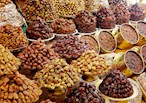Saudi Arabia's culinary landscape is as vast and varied as its geography, offering a rich palette of flavors and traditions from across its regions. These dishes are steeped into tradition, passed down through countless generations, often traversing the expansive desert and connecting Saudi's coasts, thus becoming a part of the much larger, national culinary map.
So, choosing a representative dish for each region of a country as big and diverse as Saudi Arabia is not an easy task, but here are the thirteen iconic traditional dishes for each of the thirteen provinces.
Learn more about Saudi cuisine

Al-Margaouq
PROVINCE: Riyadh
Al-Margaouq is a meat, pasta, and vegetable stew typical of the Riyadh province, with roots dating back to antiquity. This dish is crafted from whole wheat dough, rolled into thin, round pieces, and cooked in a flavorful broth made from meat and an array of vegetables, including eggplant, pumpkin, and zucchini.
 Credits: Saudi Culinary Arts Commission
Credits: Saudi Culinary Arts Commission
To prepare al-Margaouq, whole wheat flour is mixed with water and salt, creating a soft, cohesive dough. Meanwhile, the meat is partially cooked, and the vegetables are added. The dough is rolled out into delicate, thin rounds, which are then placed in the pot, ensuring they cook individually to prevent sticking.
Saleeg
PROVINCE: Makkah
Hailing from Hejaz, saleeg is a traditional Saudi Arabian rice dish consisting of creamy, porridge-like short-grain rice and roasted meat. Chicken is the most common meat choice, and it is typically boiled in water with spices before it is roasted.
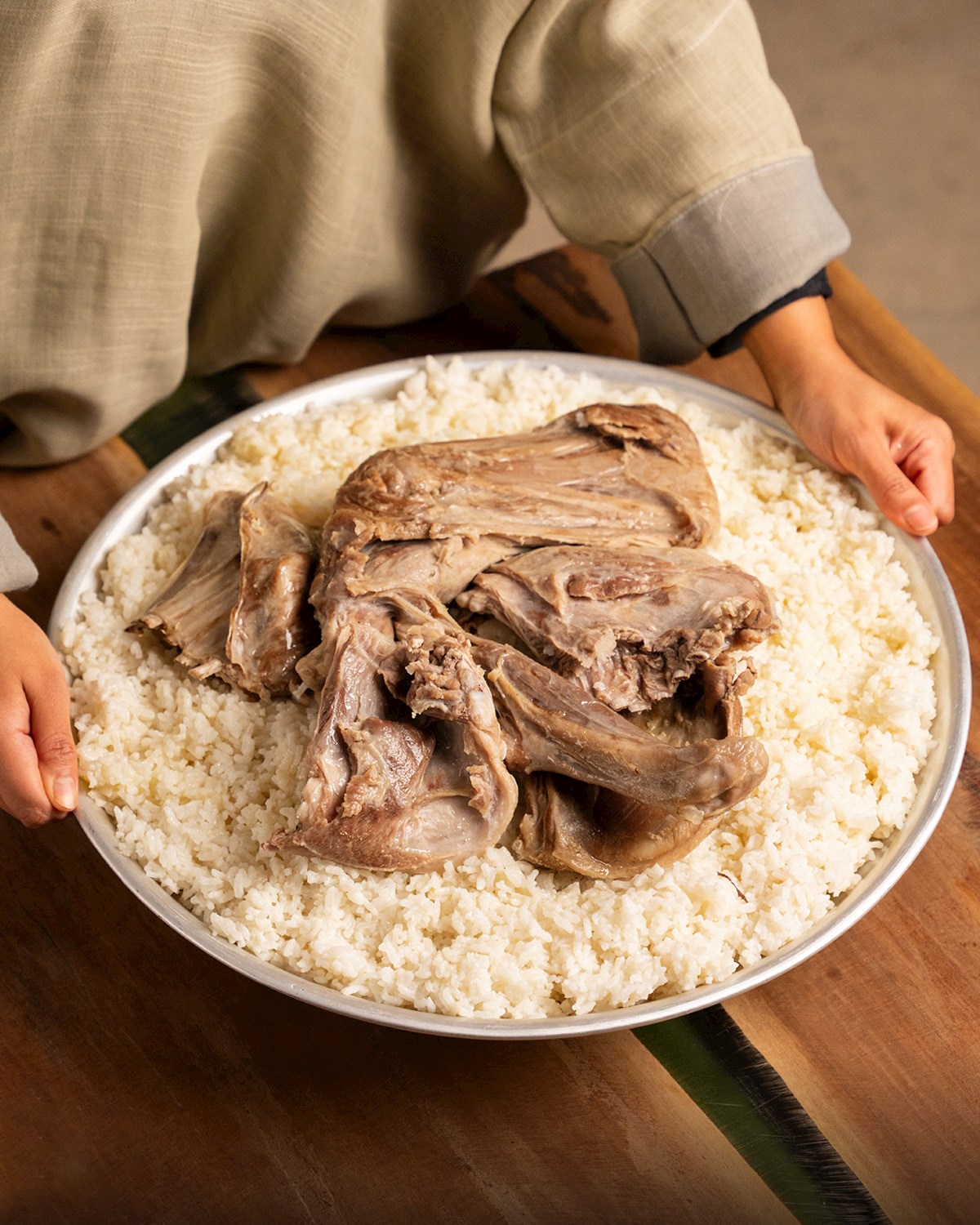 Credits: Saudi Culinary Arts Commission
Credits: Saudi Culinary Arts Commission
A large serving platter (tabasi) is traditionally used for serving saleeg, and the roasted meat is usually placed on top of the rice. Additional melted ghee or butter can be drizzled over the dish, and it is recommended to serve it with accompaniments such as salata hara (a spicy, salsa-like condiment), duggus (a chili tomato-parsley sauce), pickled lemons, or a tomato-cucumber salad.
Araz madini
PROVINCE: Al-Madinah
Madini rice is a traditional dish from the al-Madinah region in Saudi Arabia, consisting of white steamed rice topped with tender meat, served in a rich and flavorful broth that gives it a distinctive red color.
 Credits: Saudi Culinary Arts Commission
Credits: Saudi Culinary Arts Commission
The madini rice recipe involves marinating chicken (or lamb) in a blend of spices, then cooking it with rice in a pot. The meat is cooked until tender, and the rice is infused with the flavors of the spices and the meat.
Al-Mulayhiya
PROVINCE: Northern Borders Region
Al-Mulayhiya is a Northern Borders region specialty that features rice, lamb, meat broth, and dried yogurt (jameed) garnished with parsley and pine nuts.
 Credits: Saudi Culinary Arts Commission
Credits: Saudi Culinary Arts Commission
Al-Bukayla
PROVINCE: Al-Jouf
Al-Bukayla is a dessert from the al-Jouf region made by kneading together sweet, de-pitted dates and ground al-Samh seeds. The mass is shaped into a ball with a big indentation in the center into which melted ghee is poured. Al-Bukayla is served cold, and whole dates can be replaced with date paste or molasses.
 Credits: Saudi Culinary Arts Commission
Credits: Saudi Culinary Arts Commission
Muqana bread
PROVINCE: Al-Baha
Muqana bread, a staple in the al-Baha region, is a traditional dish deeply ingrained in local culture. It is made with whole wheat flour, salt, and water, and once kneaded, it is left to ferment before baking. Traditionally, approximately 7 kilograms (15 lbs) of flour are needed, and a group of women kneads it.
 Credits: Saudi Culinary Arts Commission
Credits: Saudi Culinary Arts Commission
Since pines and saffron are usually grown together with wheat, they are often added. The dough is placed on a large, round stone known as the "prayer" stone that was previously heated over an open flame. Palm tree fronds and shrub bushes are burned over the dough so the bread gains a crust, and then embers are placed over it. The bread is baked until done, about 2 hours, then cleaned from ashes and cut into smaller portions, called shitra. It is served with ghee, honey, or meat broth.
Keubaibat Hail
PROVINCE: Hail
Keubaibat Hail is a rice and meat dish from Saudi Arabia's Hail province. The pre-soaked tameen rice (basmati) is mixed with onions, tomatoes, green onions, green peppers, and spices such as Hail sarar, turmeric, cumin, and mixed spices, then wrapped in grape leaves.
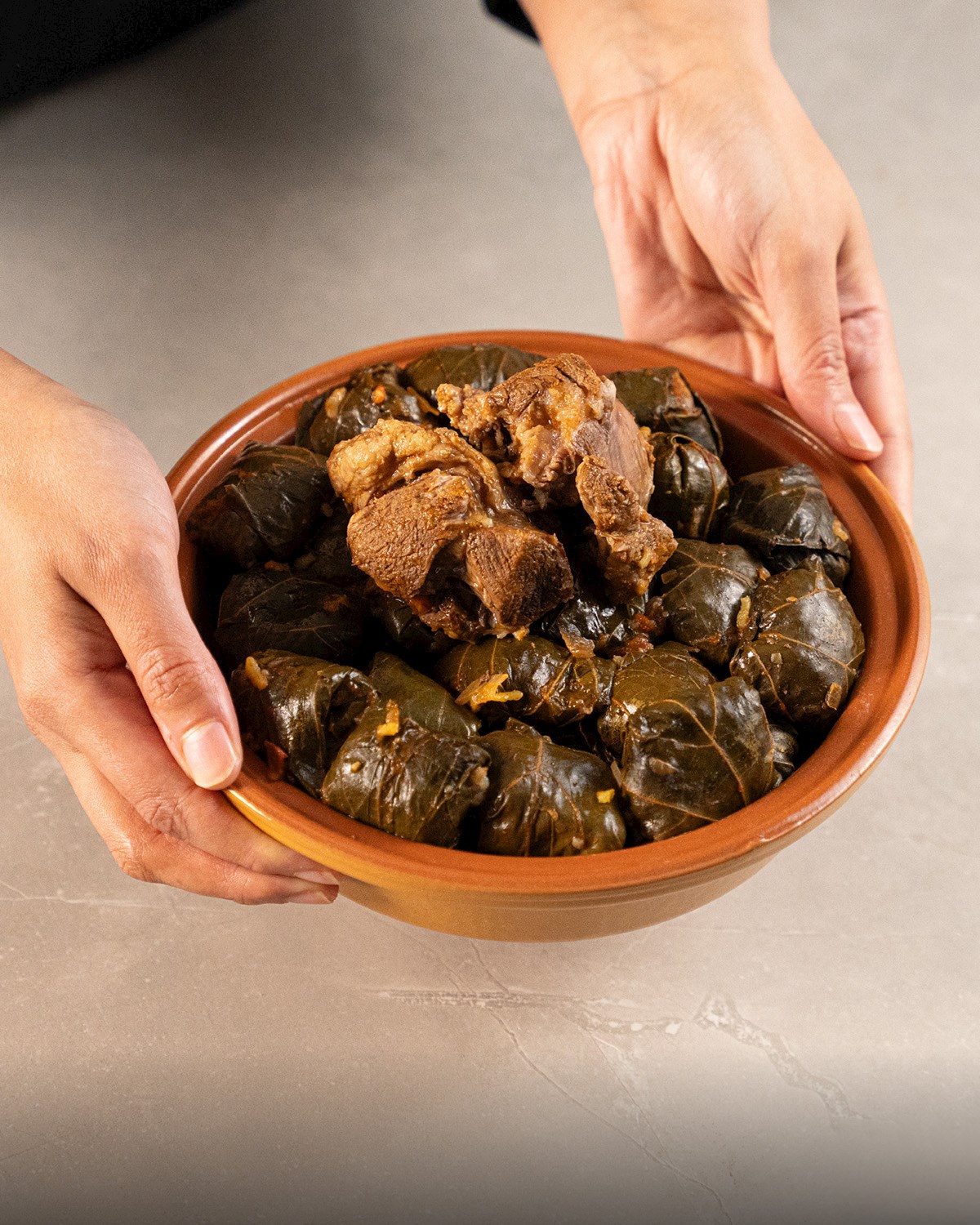 Credits: Saudi Culinary Arts Commission
Credits: Saudi Culinary Arts Commission
The stuffed grape leaves are then arranged into a pot with bone-in lamb, tomatoes, and peppers, and everything is poured over with a tomato broth and topped with grape leaves. It is simmered long and slow until done, served in a clay pot, and can be topped with lemon slices and pomegranate seeds.
Learn more about Keubaibat Hail
Al-Ruqsh
PROVINCE: Najran
Al-Ruqsh is a dish typical of the Najran region in Saudi Arabia, consisting of hand-torn thin flatbread poured over with meat broth and topped with meat, traditionally lamb. Alternatively, the bread can be poured over with ghee and milk. The bread is made with whole wheat flour and water, and it's liquid in consistency, so it's simply smeared in a thin layer onto a hot griddle to bake.
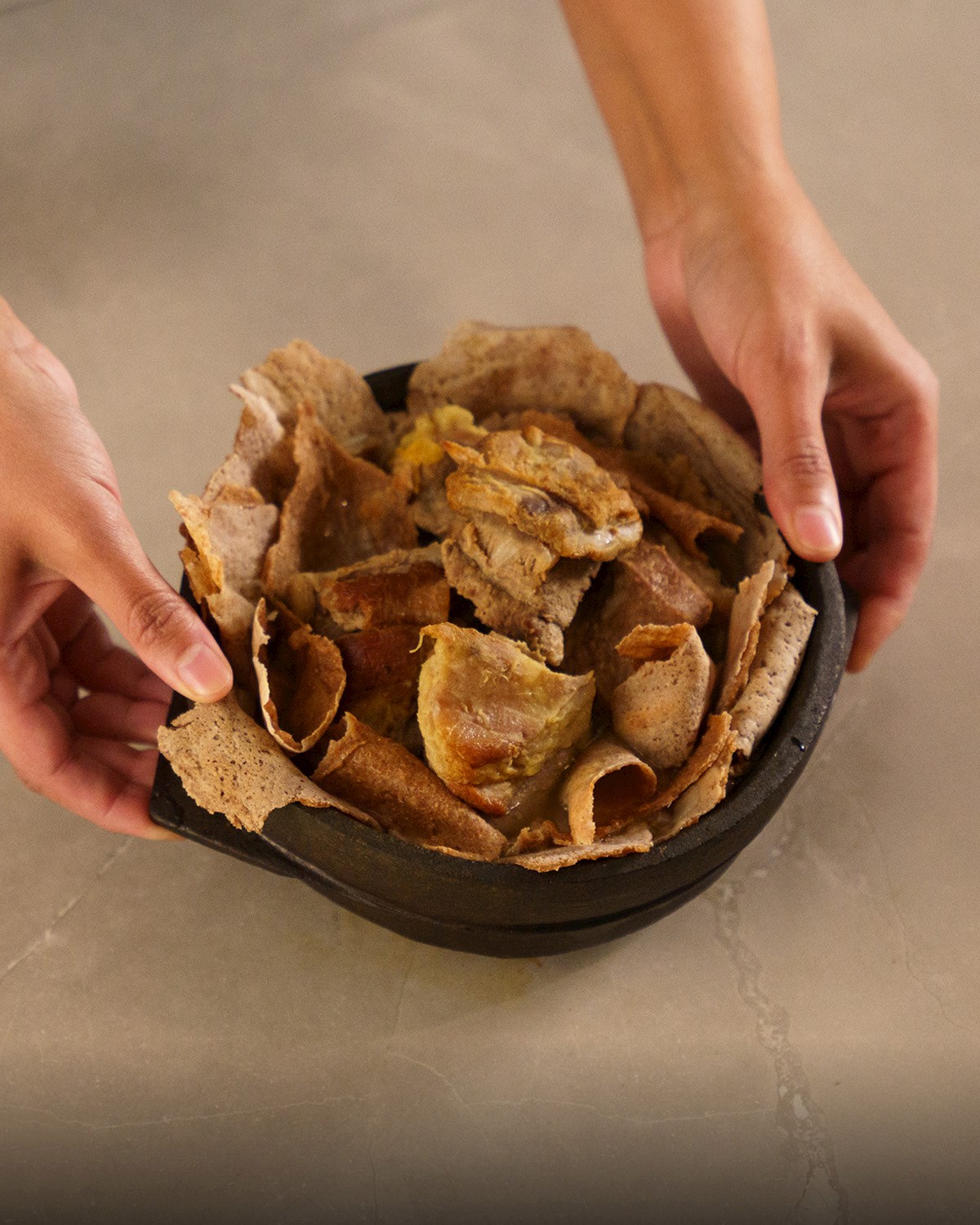 Credits: Saudi Culinary Arts Commission
Credits: Saudi Culinary Arts Commission
The dish is traditionally served in al-Mudahin, a granite stone dish that has a cover made with a lid made of palm leaves. Some broth usually accompanies the dish on the side, which can be added depending on how wet or dry one likes it. Hard-boiled eggs, roasted onions, and green peppers are also served with the dish.
Al-Kleja
PROVINCE: Al-Qassim
Al-Kleja is a Saudi Arabian cookie typical of the al-Qassim province. It is made with yeasted dough that has been enriched with spices, such as cardamom and cinnamon, and filled with a mixture of either date, sugar, or honey molasses and spices, typically cardamom, but also black dried lime, cinnamon, and ginger.
 Credits: Saudi Culinary Arts Commission
Credits: Saudi Culinary Arts Commission
It can also have ghee or butter in the filling. These days, it can also have turmeric and saffron. The cookie is usually round, with a latticework pattern imprinted on top. Once baked, it is served with coffee or tea. It should not be confused with the Iraqui kleicha, which is a date or nut-filled roll.
Al-Hassawi rice
PROVINCE: Eastern Region
Al-Hassawi rice, cultivated in the al-Ahsa oasis of Saudi Arabia's al-Sharqiyya region, thrives in an arid climate with scorching temperatures of up to 48°C/118°F. This unique rice variety has adapted to the challenging environment, relying on meticulous care and substantial irrigation.
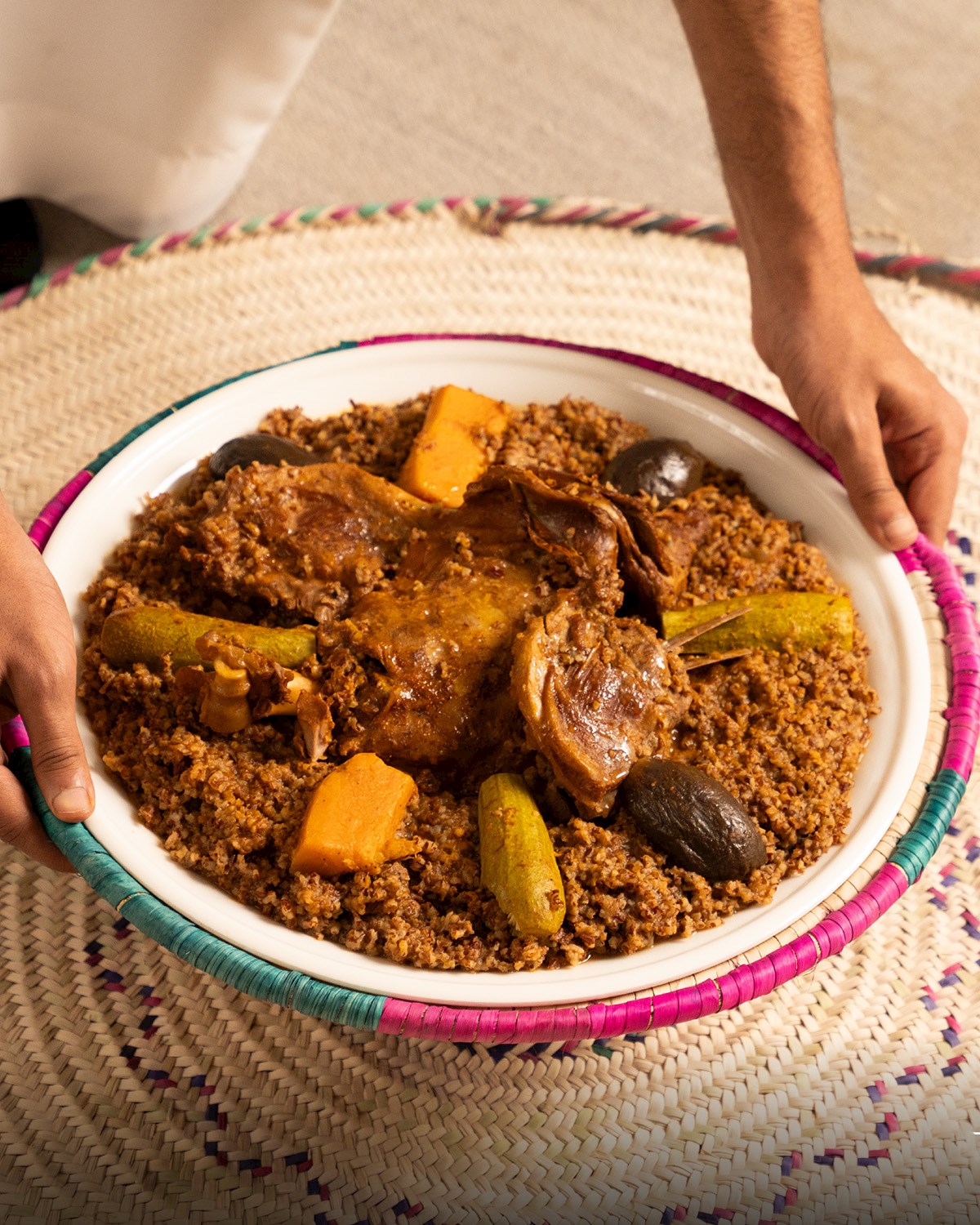 Credits: Saudi Culinary Arts Commission
Credits: Saudi Culinary Arts Commission
Al-Hassawi rice is a distinctive red variety. Its exceptional taste is most pronounced when cooked with spices or accompanied by meat.
Learn more about Al-Hassawi rice
Al-Maghsh
PROVINCE: Jazan
Al-Maghsh from Jazan region is a slow-cooked lamb stew rich in flavor. It combines lamb, onions, garlic, and aromatic spices like cumin and cardamom with vegetables, namely tomatoes, zucchini, potatoes, and okra. What makes al-Maghsh unique is the slow-cooking process in a stone pot in an earth oven called mefa.
 Credits: Saudi Culinary Arts Commission
Credits: Saudi Culinary Arts Commission
This slow roast makes the lamb tender and delicious. Al-Maghsh is typically served with rice or bread and is a must-have during Eid celebrations. Besides being a hearty main dish, its fragrant broth is also enjoyed as soup.
Al-Sayadiah
PROVINCE: Tabuk
This traditional combination of rice and fish is typically prepared with white fish such as sea bass or red snapper. The fish is fried or baked separately, while the rice is cooked in a special fish broth that is prepared with fried onions and bahārāt - a traditional spice blend that usually employs allspice, peppercorns, cassia, coriander, cardamom, cumin, and chili peppers or paprika.
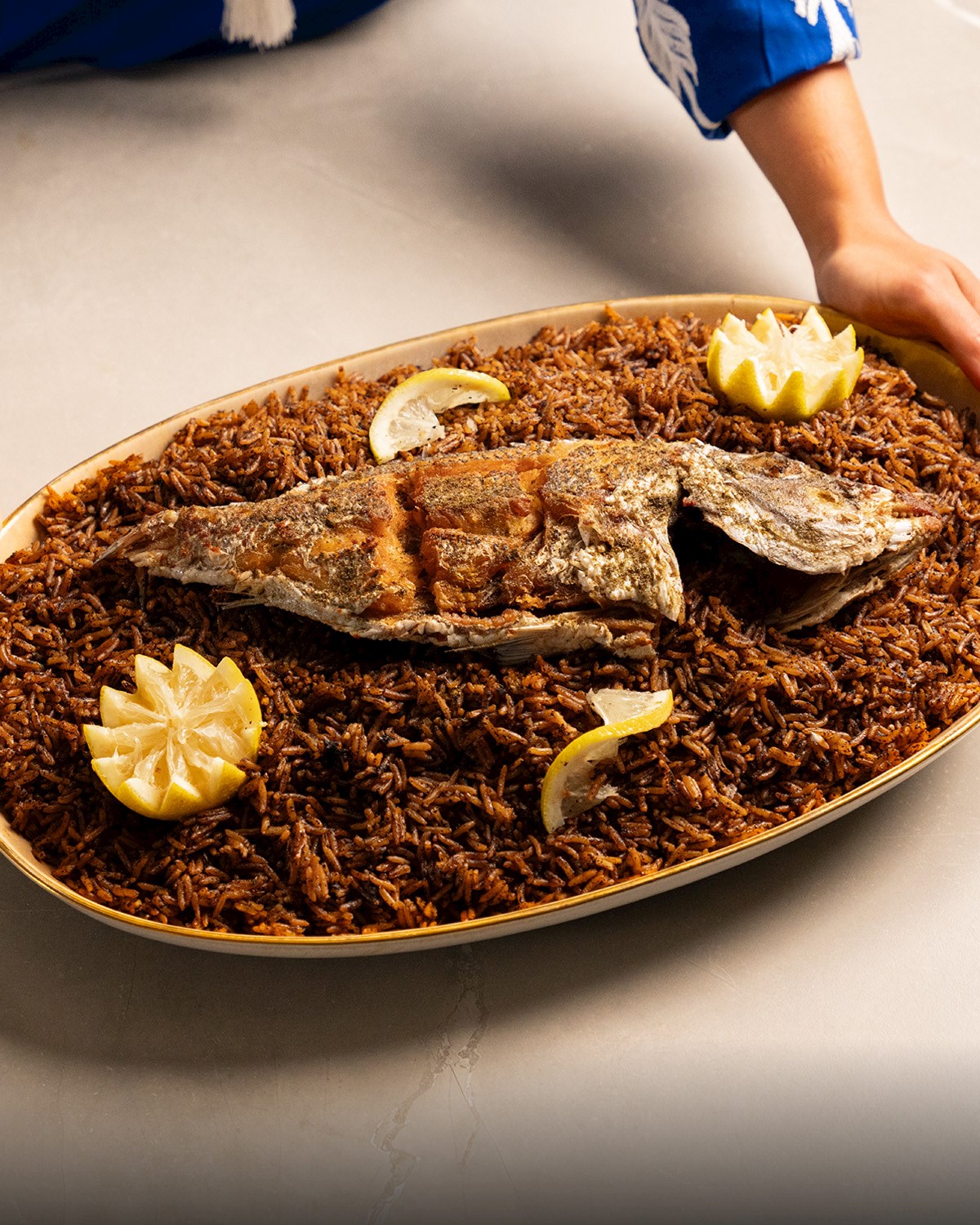 Credits: Saudi Culinary Arts Commission
Credits: Saudi Culinary Arts Commission
The dish is traditionally served on one plate, topped with lightly toasted pine nuts and slivered almonds. If desired, a special sauce can be served on the side.
Al-Haneeth
PROVINCE: 'Asir
Haneeth is a traditional dish from the 'Asir region of Saudi Arabia, popular across the Arabian Peninsula. It features slow-roasted, spice-rubbed lamb, typically cooked in a Tannour oven, and often served on a bed of rice.
 Credits: Saudi Culinary Arts Commission
Credits: Saudi Culinary Arts Commission
The preparation involves dry-rubbing chunks of bone-in lamb with a unique spice mix, then slowly roasting it in the oven at a very low temperature for about six hours, ensuring the meat is tender and succulent.

